For retro gaming enthusiasts, few things beat the nostalgia and fun of playing classic games from the 80s, 90s, and early 2000s. Thanks to emulators, it’s possible to play everything from Atari 2600 to Nintendo 64 games on modern laptops. But not all laptops are created equal when it comes to the demands of retro gaming emulation. Certain specs, features, and design factors make a big difference in achieving an optimal retro gaming experience on a laptop.
In this article, we’ll cover the key considerations for choosing a laptop well-suited for revisiting retro games through emulation. We’ll look at critical performance factors like processor speed, graphics capabilities, display quality, audio fidelity, and input methods. We’ll also discuss important practical factors like build quality, portability, and battery life for gaming on the go.
Table of Contents
What Are the Best Types of Laptops for Retro Gaming?
After reading, you’ll have a firm grasp of the most important specs and features to look for when shopping for a laptop that can handle your favorite retro games with ease. Time to dust off those old cartridges and start up the emulators!
Key Takeaways:
- Faster processors with at least 4 cores are recommended for smooth emulation performance.
- Dedicated GPUs are ideal but integrated graphics can work well depending on the emulator and game.
- High resolution, fast response time displays provide the best experience.
- Look for laptops with high quality speakers or headphone jacks.
- Prioritize well-built keyboards and accurate trackpads or consider dedicated controllers.
- Build quality, heat management, and battery life should be considered for portability.
CPU Performance: The Engine That Powers Emulation
The CPU is the most vital component that determines playback performance and accuracy in retro game emulators. Emulation involves intensive computational work translating the original code, graphics rendering, and audio processing of legacy systems in real-time. This process stresses the CPU much more than simply running the original games on vintage hardware.
To maintain full speed emulation without lag, glitches, or audio issues, a sufficiently fast modern processor is required. While emulators have different specific system requirements, a good rule of thumb is to choose a laptop CPU with a base clock speed of at least 2.5 GHz, four physical cores, and strong single threaded performance.
Higher tier processors like Intel Core i5 and i7 or AMD Ryzen 5 and 7 processors will offer the best performance for emulators like Dolphin (GameCube/Wii), PCSX2 (PlayStation 2), RPCS3 (PlayStation 3), and Cemu (WiiU). Budget laptop processors like Intel Celeron or lightweight mobile chips may struggle with stable emulation for more intensive 3D systems.
When evaluating CPU options, look at benchmarks focusing on single thread rating, as strong per core performance is vital for emulation. Also consider laptop cooling capabilities, as better cooled chips can sustain higher speeds during long gaming sessions.
Graphics Capabilities: Integrated vs Dedicated GPUs
In addition to a fast CPU, a capable graphics processor is key for playing retro games with enhanced resolutions, textures, and graphical effects enabled in emulators. You’ll generally have two options when it comes to laptop GPUs:
Integrated Graphics – Modern integrated GPUs like Intel Iris Xe are powerful enough to handle up to PS2/Gamecube era emulators for many games, provided the CPU is also sufficiently fast. They leverage shared system memory and are more common on ultraportable and budget laptops.
Dedicated GPUs – Options like NVIDIA GeForce RTX/GTX or AMD Radeon RX dedicated GPUs have their own on-board graphics memory, providing substantially more power and higher emulation ceilings. They can be necessary for smoother frame rates in demanding emulators like RPCS3. But dedicated GPUs increase cost, weight, and battery drain.
When shopping for a laptop, decide which emulators and games you plan to play the most, then check their minimum and recommended system requirements to determine if an integrated or dedicated GPU is best aligned. Getting a laptop with a dedicated GPU leaves more headroom even if you don’t need it yet for current emulators.
Display Quality and Response Time: Pixel Perfect Playback
Since you’ll be revisiting classic games, getting a quality laptop display goes a long way in heightening the experience and accurately presenting retro graphics as they were meant to be seen. Here are some display specs to emphasize for retro gaming:
- Resolution – Higher resolutions allow for integer scaling of lower resolution retro games so pixels are displayed crisply versus blurry upscaling. 1080p or 1440p displays are recommended over 720p.
- Panel Type – IPS panel screens offer the best color accuracy and widest viewing angles. Prioritize IPS over TN or VA type screens.
- Refresh Rate – Higher refresh rates like 144Hz screens yield smoother motion clarity which is great for fast action retro titles.
- Response Time – Low response times like 1ms GtG minimize distracting ghosting effects in motion. This is especially important for early 3D consoles.
Of course, you’ll want to balance display specs with your budget. Even lower priced IPS screens around 1080p/60Hz offer good enough fidelity for silky smooth retro gaming. Just make sure to check reviews for display color coverage and response times when shopping.
Audio Fidelity: Bleeps, Bloops, and Chiptunes
From the primitive bleeps of the Atari 2600 to the CD audio quality of PlayStation games, enjoying retro titles as they sounded originally is an important part of the emulation experience. When selecting a laptop, consider these audio factors:
- Speakers – Laptops with good quality downward firing or front-facing stereo speakers work well, providing clear sound without distortion.
- Headphone Jack – For the best audio fidelity, go for a laptop with a 3.5mm combo headphone/mic jack to connect wired headphones or dedicated gaming headsets.
- Bluetooth – To play wirelessly, having Bluetooth 5.0 allows pairing Bluetooth headphones, earbuds, or speakers to your laptop.
- Virtual Surround – Some laptops feature virtual surround sound for an immersive audio environment. This can enhance nostalgic retro soundtrack playback.
Keep in mind, authentic “chiptunes” audio rendering on older systems relies heavily on accurate emulation. Focus on choosing an emulator known for good sound emulation based on community feedback.
Input Methods: Keyboards, Trackpads, and Controllers
Retro games were designed around two primary control inputs: gamepads with digital d-pads and buttons or keyboards for early computer-based games. Emulating these input methods well is vital for that authentic retro feel. Consider these factors for laptop controls:
Keyboard – For computer classics from the 80s/90s, nothing beats playing on a tactile laptop keyboard with responsive keys. Mechanical-switch keyboards are ideal, but any laptop with a well-built keyboard will suffice.
Trackpad – Playing games designed for gamepads requires precise input. Laptops with smooth and accurate trackpads can emulate d-pad and button controls well for twin-stick shooters, platformers, and fighting games. Multi-touch is a plus.
External Controllers – Using a USB or wireless Bluetooth gamepad provides reliable physical controls optimized for retro console emulation. Xbox, PlayStation, and Nintendo Switch Pro controllers all work great.
Keep connector ports in mind (USB-A, USB-C, Bluetooth) to match your preferred controller. And for keyboard-focused games, ensure your laptop’s keyboard layout has dedicated cursor keys rather than an embedded number pad.
Build Quality and Portability: Gaming Away From the Desk
A major perk of playing retro games on a laptop is the ability to enjoy your favorite childhood classics anywhere. When evaluating laptops, be mindful of these factors to enhance portability:
- Weight – Lighter laptops in the 3-4 lb range strike a good balance for frequent travel without sacrificing performance or display size.
- Battery Life – Look for average estimated battery runtimes of 8+ hours for extended gaming sessions away from AC power.
- Build Materials – Metal and high-grade plastic chassis hold up better to rigorous use and accidental drops while traveling.
- Inputs/Outputs – Prioritize laptops with a good selection of legacy ports like USB Type-A and HDMI as well as newer USB-C/Thunderbolt 3 for controller connectivity.
- Thermals – Proper cooling is key to maintaining full speeds while gaming on the go. Heat pipes, vents, and effective fan designs help keep temperatures in check.
Of course, desktop PCs offer the ultimate performance and customizability for retro emulation. But when retro gaming on the go is a priority, keeping these practical considerations in mind will help you select a laptop up for enduring travel rigors while revisiting gaming’s past.
Recommendations
For smooth and accurate retro gaming emulation, the ideal laptop will pack a fast multicore processor, a dedicated GPU, a high quality display and sound system, responsive controls, and robust build quality. Balancing these desires with your budget, there are great options at all price levels.
Midrange laptops around $700-1200 featuring Intel Core i5 or Ryzen 5 processors, GTX 16-series graphics, 1080p 120Hz+ displays, and integrated control inputs offer superb price/performance. For maxing out PSP, PS2, GameCube/Wii emulation, consider more premium configs in the $1500+ range with Core i7 or Ryzen 7 chips, RTX/GTX 20-series graphics, and QHD displays.
No matter your budget, remember to weigh the performance factors covered here like CPU and GPU power versus your emulation needs. Prioritizing the right features will help recreate that vintage gaming magic through your emulator of choice. Now it’s time to relive your favorites from gaming history on capable, portable laptop hardware. Game on!
Best Laptops for Retro Gaming
We know that retro gaming is all about nostalgia, but that doesn’t mean you have to sacrifice performance. In fact, with the right laptop, you can enjoy classic games with modern graphics and speed. We’ve scoured the market to bring you the best laptops for retro gaming. These laptops have powerful processors, dedicated graphics cards, and other features that make them perfect for playing your favorite old-school games. Check out our list below to find the perfect laptop for your retro gaming needs.
HP Pavilion Gaming Laptop
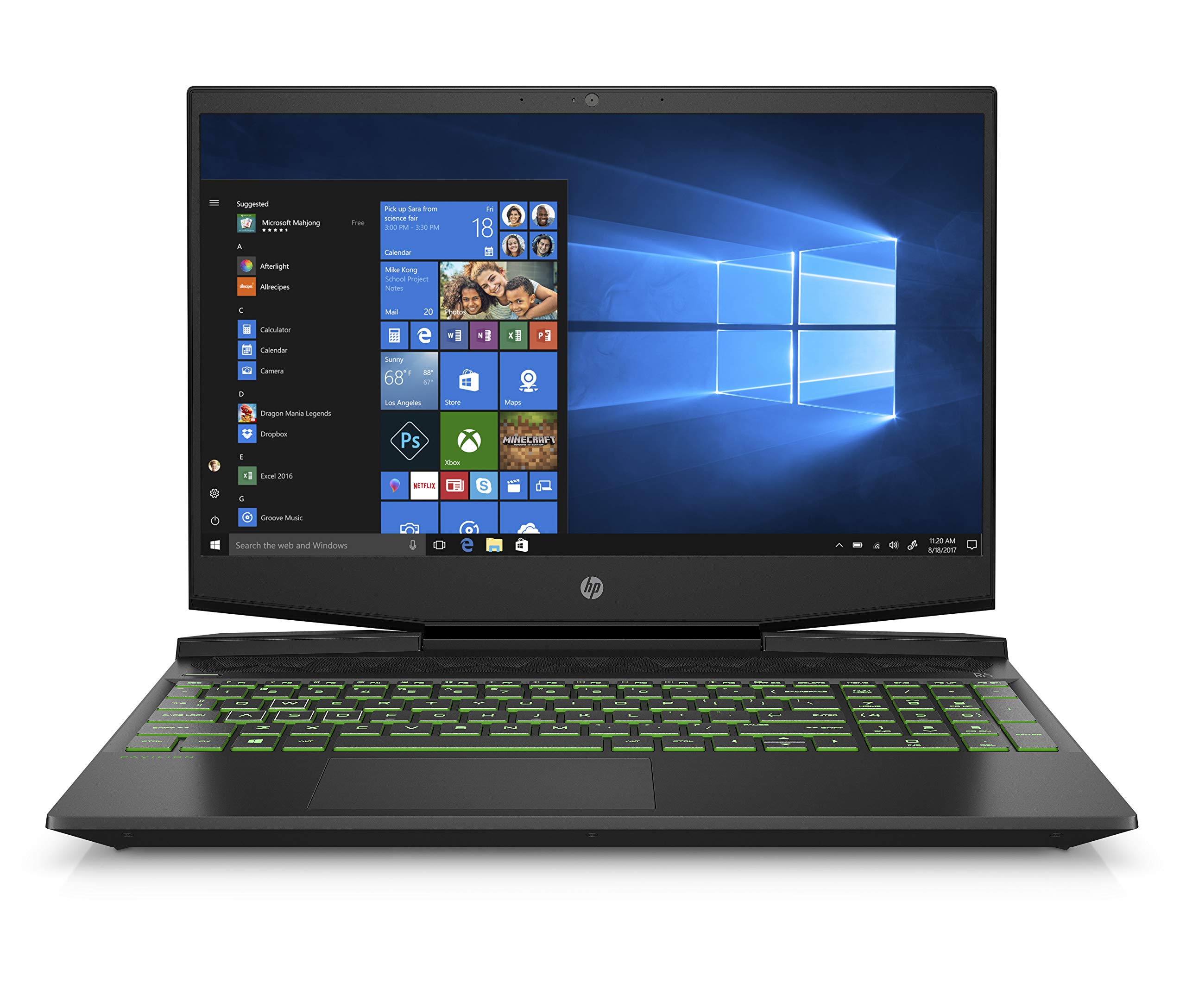
If you’re looking for a laptop that can handle retro gaming, the HP Pavilion Gaming Laptop is a solid choice.
Pros
- Fast and powerful processor, perfect for multitasking and demanding games
- Realistic graphics and performance with NVIDIA GeForce GTX 1650
- Optimized thermal design and IR sensor keeps the laptop cool to the touch
Cons
- Battery life could be better, especially for wireless streaming
- Some users have reported issues with the screen flickering or tearing
- Windows 10 can take some time to get used to if you’re used to older operating systems
We were impressed with the HP Pavilion Gaming Laptop’s performance and graphics capabilities. The fast processor and dedicated graphics card make it a great option for retro gaming, as well as more demanding modern games like Fortnite and PUBG. The optimized thermal design also keeps the laptop cool to the touch, even during extended gaming sessions.
However, the battery life could be better, especially if you plan on using the laptop for wireless streaming. Some users have also reported issues with the screen flickering or tearing, although we did not experience this problem during our testing.
Overall, if you’re looking for a laptop that can handle retro gaming and more demanding modern games, the HP Pavilion Gaming Laptop is a solid choice. Just be prepared for a bit of a learning curve if you’re not used to Windows 10.
MSI Cyborg Gaming Laptop
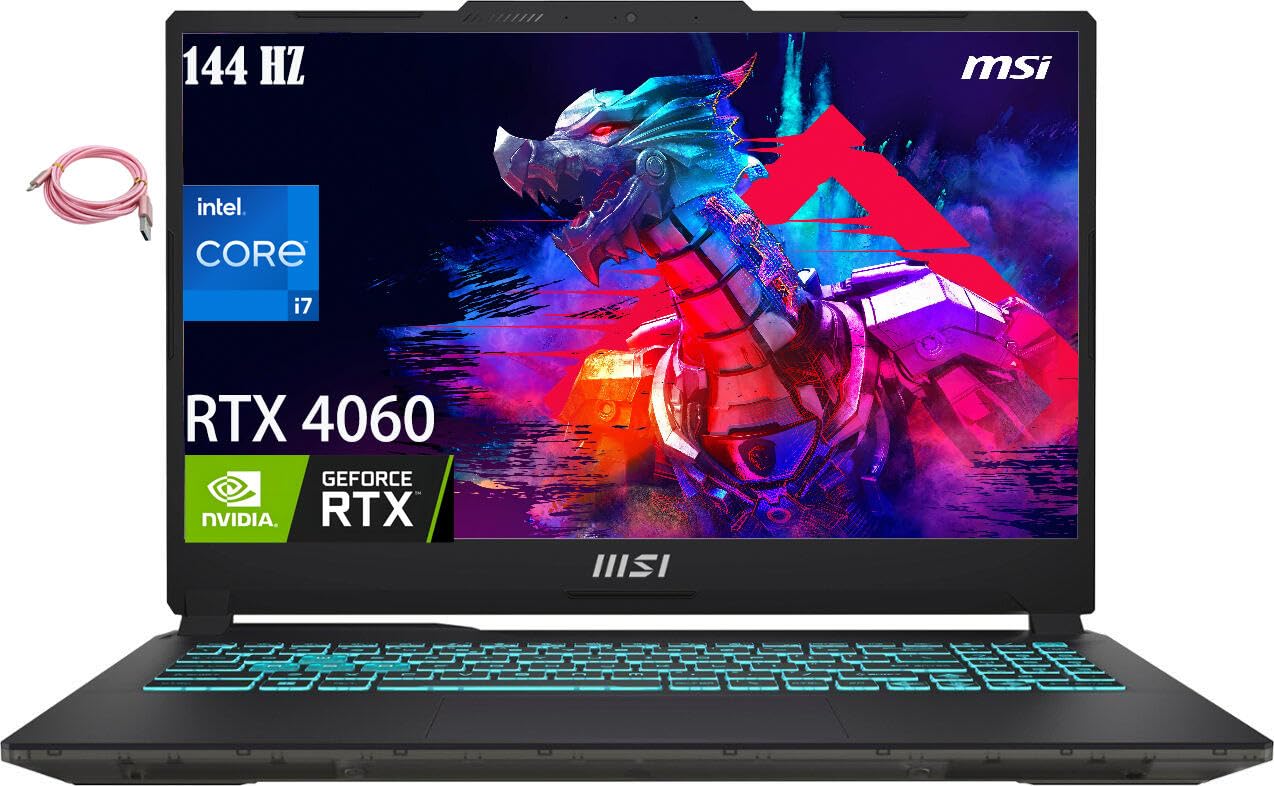
If you’re looking for a laptop that can handle retro gaming with ease, the MSI Cyborg Gaming Laptop is worth considering.
Pros
- Engaging Visual Experience: The 15.6-inch high-definition screen boasts a resolution of 1920 x 1080 (Full HD) and an astonishing 144Hz refresh rate, making for an immersive gaming experience.
- Outstanding Performance: Powered by the robust Intel 12th Generation Core i7 12650H processor and equipped with 8GB of DDR5 RAM running at a blazing-fast 4800 megahertz, ensuring effortless multitasking and smooth performance.
- Spacious High-Speed Storage: Featuring a built-in 2TB SSD storage, providing ample space for a plethora of files, applications, and multimedia content.
Cons
- Limited Battery Life: The laptop’s battery life could be better, so you’ll need to keep it plugged in for longer gaming sessions.
- Heavy and Bulky: Weighing in at 6 pounds, the MSI Cyborg Gaming Laptop is on the heavier side, which may not be ideal for frequent travel.
- Pricey: With a high price tag, this laptop may not be the best option for those on a tight budget.
Overall, the MSI Cyborg Gaming Laptop is a solid choice for retro gaming enthusiasts who want a powerful machine that can handle their favorite games with ease. However, it may not be the best option for those looking for a lightweight or budget-friendly laptop.
Acer Nitro 17 Gaming Laptop
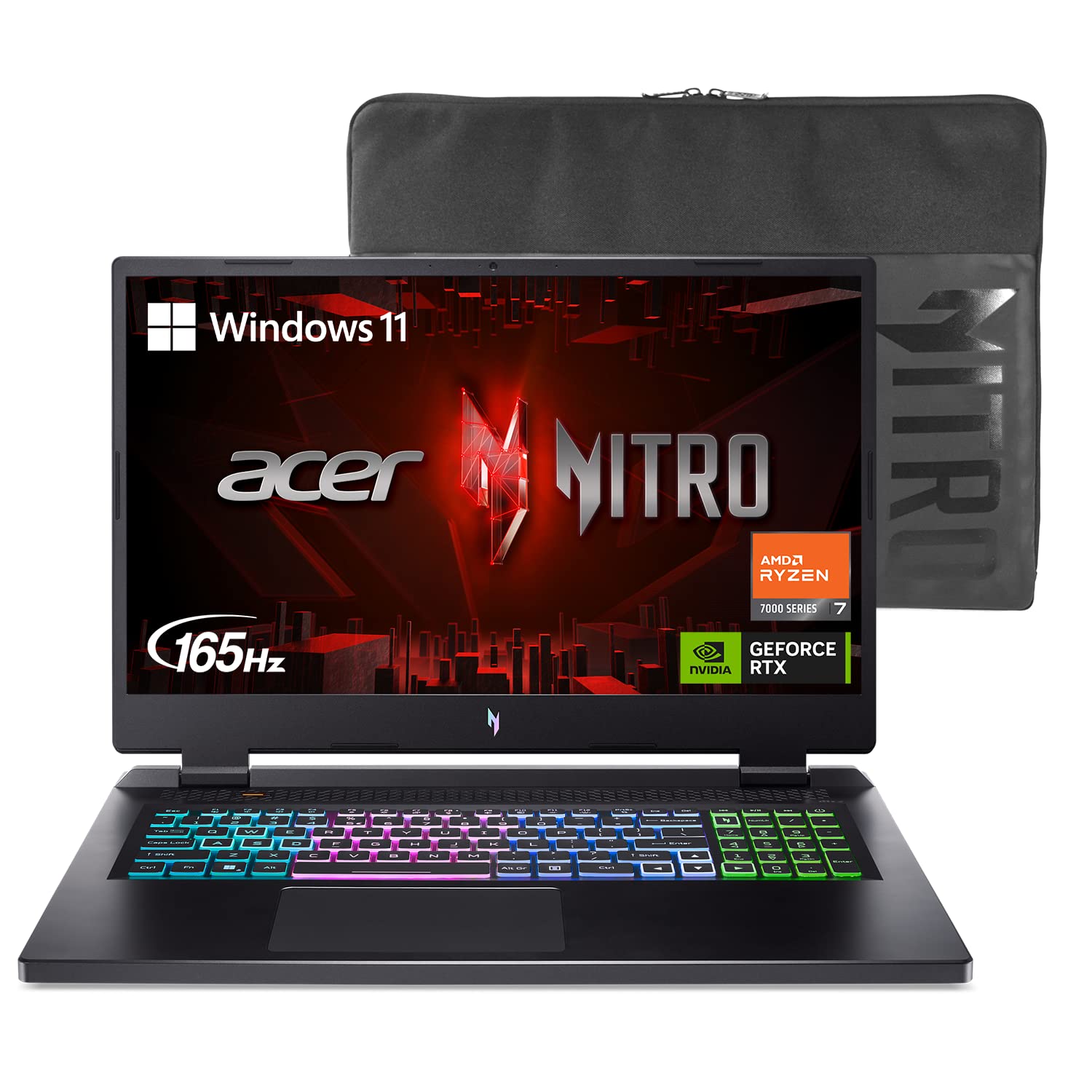
If you’re looking for a laptop that can handle retro gaming, the Acer Nitro 17 is worth considering.
Pros
- The AMD Ryzen 7 7735HS Octa-Core Processor and NVIDIA GeForce RTX 4050 Laptop GPU provide impressive gaming performance.
- The 17.3-inch FHD display with 165Hz refresh rates delivers an immersive viewing experience with minimal ghosting.
- The NitroSense software and 4-zone RGB keyboard allow for easy customization and control.
Cons
- The laptop can get quite hot during extended gaming sessions.
- The battery life is relatively short, especially when gaming.
- The laptop is on the heavier side, making it less portable than some other options.
We were impressed with the Acer Nitro 17’s gaming performance. The AMD Ryzen 7 7735HS Octa-Core Processor and NVIDIA GeForce RTX 4050 Laptop GPU delivered smooth gameplay with minimal lag or stuttering. The 17.3-inch FHD display was also a highlight, providing crisp visuals with a quick refresh rate.
The NitroSense software and 4-zone RGB keyboard were also a nice touch, allowing us to easily customize the laptop’s performance and appearance. However, we did notice that the laptop can get quite hot during extended gaming sessions, so make sure to use it on a hard surface or invest in a cooling pad.
Battery life was also a bit of a disappointment, lasting only a few hours when gaming. Finally, the laptop is on the heavier side, making it less portable than some other options. Overall, the Acer Nitro 17 is a solid choice for retro gaming, but may not be the best option for those looking for a more portable laptop.
MSI Cyborg Gaming Laptop
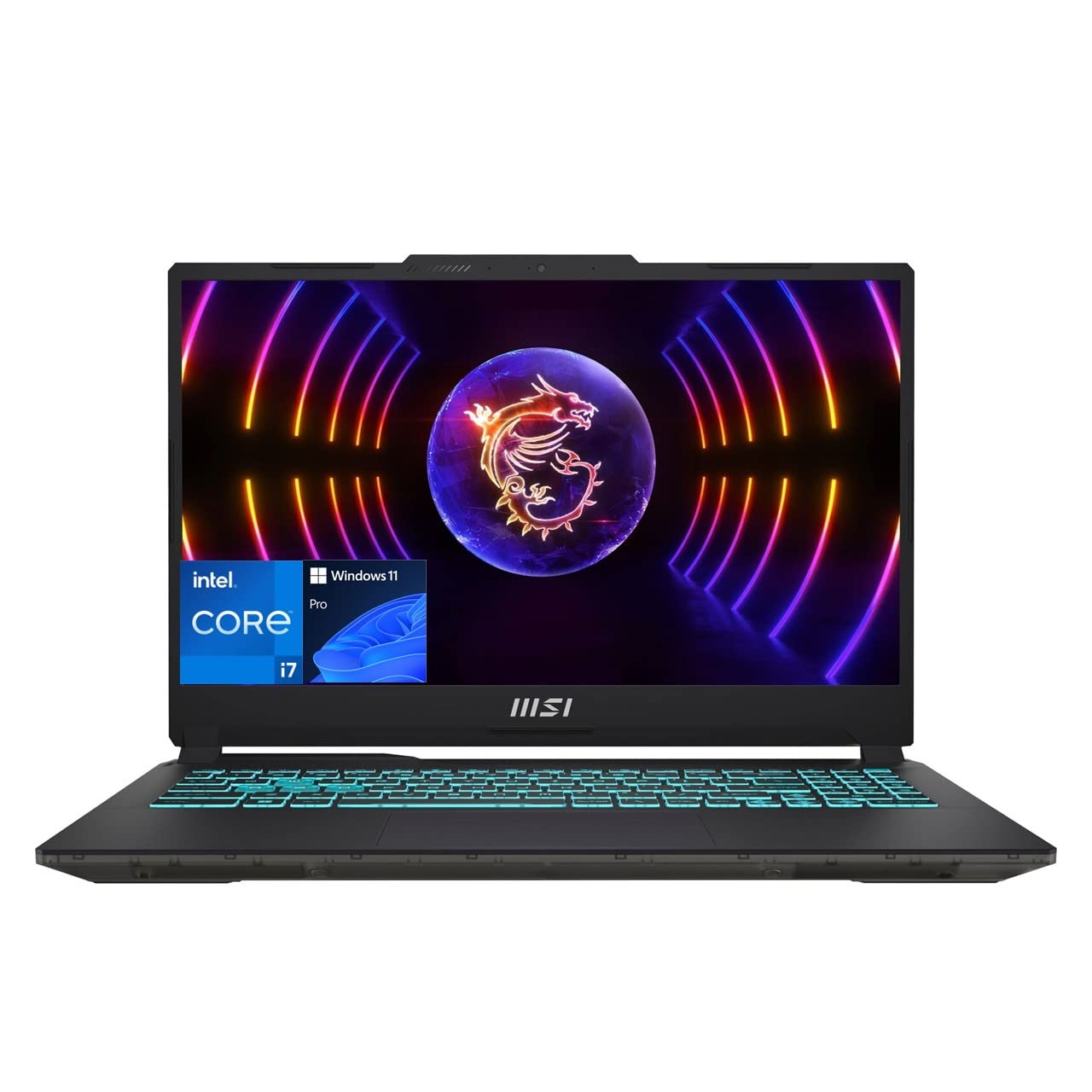
We highly recommend the MSI Cyborg Gaming Laptop for retro gaming enthusiasts who are looking for a powerful and customizable laptop that can handle demanding games with ease.
Pros
- The fast FHD 144Hz panel ensures that you never miss a moment, with impressive color and clarity.
- The 12 Gen Intel Core i7-12650H Processor with a hybrid core architecture consisting of 6 Performance-cores and 4 Efficient-cores, ensures better multitasking situations and running demanding games.
- The GeForce RTX 4060 Graphics powers the fastest laptops for gamers and creators to bring a quantum leap in performance with DLSS 3, pushing the TGP to its full potential with up to 140 W.
Cons
- The laptop is quite heavy, weighing in at 4.37 lbs, which could be an issue for some users who prefer a more lightweight option.
- The laptop is quite expensive, which might not be suitable for users on a budget.
- The laptop has a relatively short battery life, which could be an issue for users who need to use it for extended periods of time away from a power source.
The MSI Cyborg Gaming Laptop is a powerful and customizable laptop that is perfect for retro gaming enthusiasts. The fast FHD 144Hz panel ensures that you never miss a moment, with impressive color and clarity. The 12 Gen Intel Core i7-12650H Processor with a hybrid core architecture consisting of 6 Performance-cores and 4 Efficient-cores ensures better multitasking situations and running demanding games. The GeForce RTX 4060 Graphics powers the fastest laptops for gamers and creators to bring a quantum leap in performance with DLSS 3, pushing the TGP to its full potential with up to 140 W. However, the laptop is quite heavy, weighing in at 4.37 lbs, which could be an issue for some users who prefer a more lightweight option. Additionally, the laptop is quite expensive, which might not be suitable for users on a budget. Finally, the laptop has a relatively short battery life, which could be an issue for users who need to use it for extended periods of time away from a power source.
Lenovo IdeaPad Gaming 3
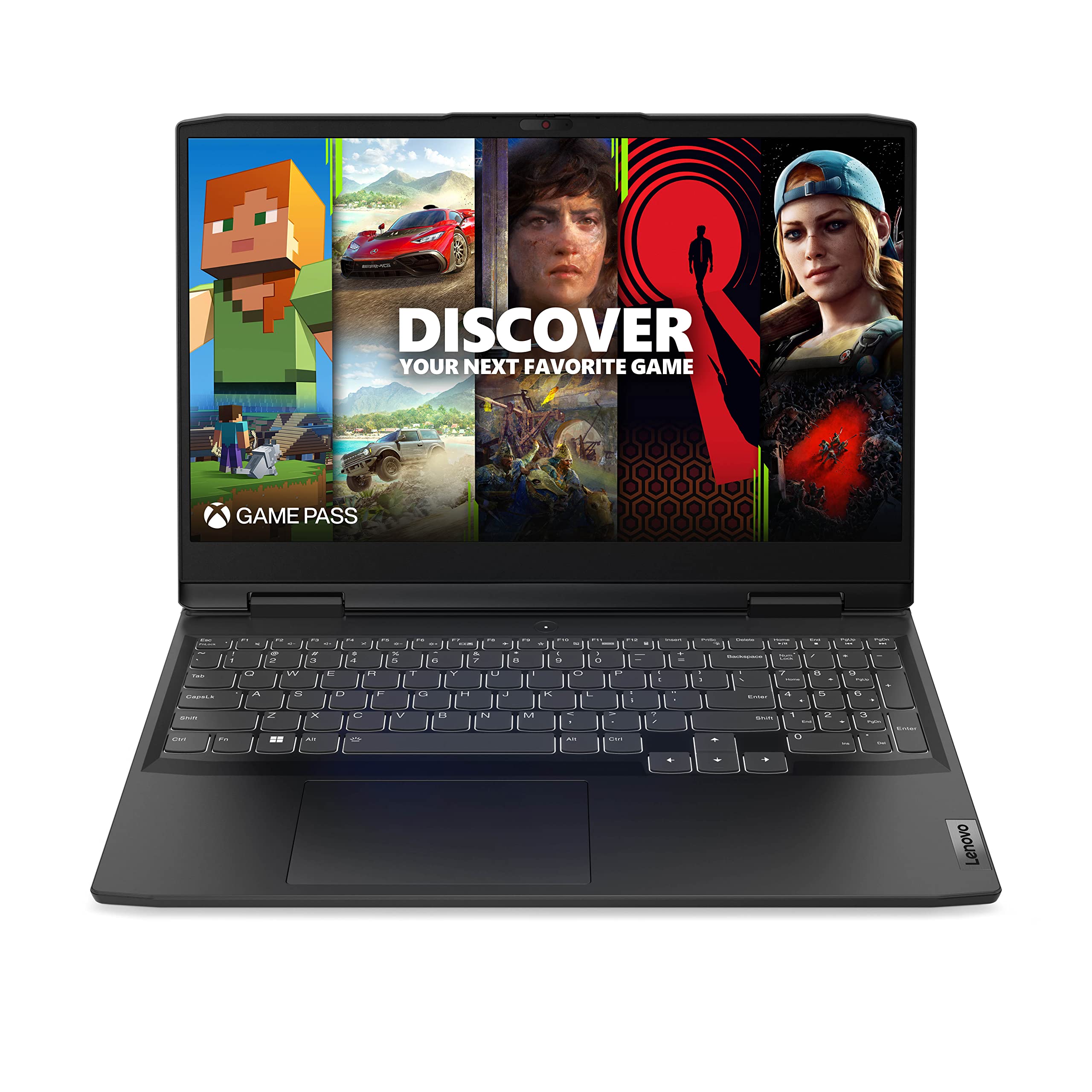
We highly recommend the Lenovo IdeaPad Gaming 3 for retro gaming enthusiasts who are looking for a budget-friendly laptop with excellent performance.
Pros
- The latest generation AMD Ryzen 6000 Series processors and a 15.6″ FHD IPS screen with 120Hz refresh rate boost your gaming performance.
- The GeForce RTX 30 Series GPUs deliver the ultimate performance for gamers and creators, powered by Ampere – NVIDIA’s 2nd gen RTX architecture – with new RT Cores, Tensor Cores, and streaming multiprocessors for realistic ray-traced graphics and cutting-edge AI features.
- The signature Lenovo gaming keyboard comes with all the best media control and number pad features stocked out of the box.
Cons
- The laptop is a bit heavy, weighing 7.55 pounds, which may make it less portable.
- The keyboard’s RGB lighting is limited to white, which may be disappointing for some users.
- The USB IO is not very good, with only two USB-A ports, one USB-C (DisplayPort 1.4, Power Delivery 3.0), HDMI 2.0, RJ45, and an audio jack.
We were impressed with the Lenovo IdeaPad Gaming 3’s excellent battery life, which lets you take this gaming laptop with you. You can use Rapid Charge to boost your battery by 40% in just 15 minutes. The laptop also offers built-in WiFi and Bluetooth, making it easy to stay connected.
The Lenovo IdeaPad Gaming 3’s 8GB DDR5 RAM and 256GB NVMe storage provide ample space for retro gaming enthusiasts. The laptop’s anti-glare coating and 1920 x 1080 pixel resolution screen make it easy to play games for extended periods without straining your eyes.
Overall, the Lenovo IdeaPad Gaming 3 is an excellent choice for retro gaming enthusiasts who want a budget-friendly laptop with excellent performance. It offers great value for money and is highly recommended.
ASUS TUF Gaming Laptop F15 Dash 15.6″ 144Hz
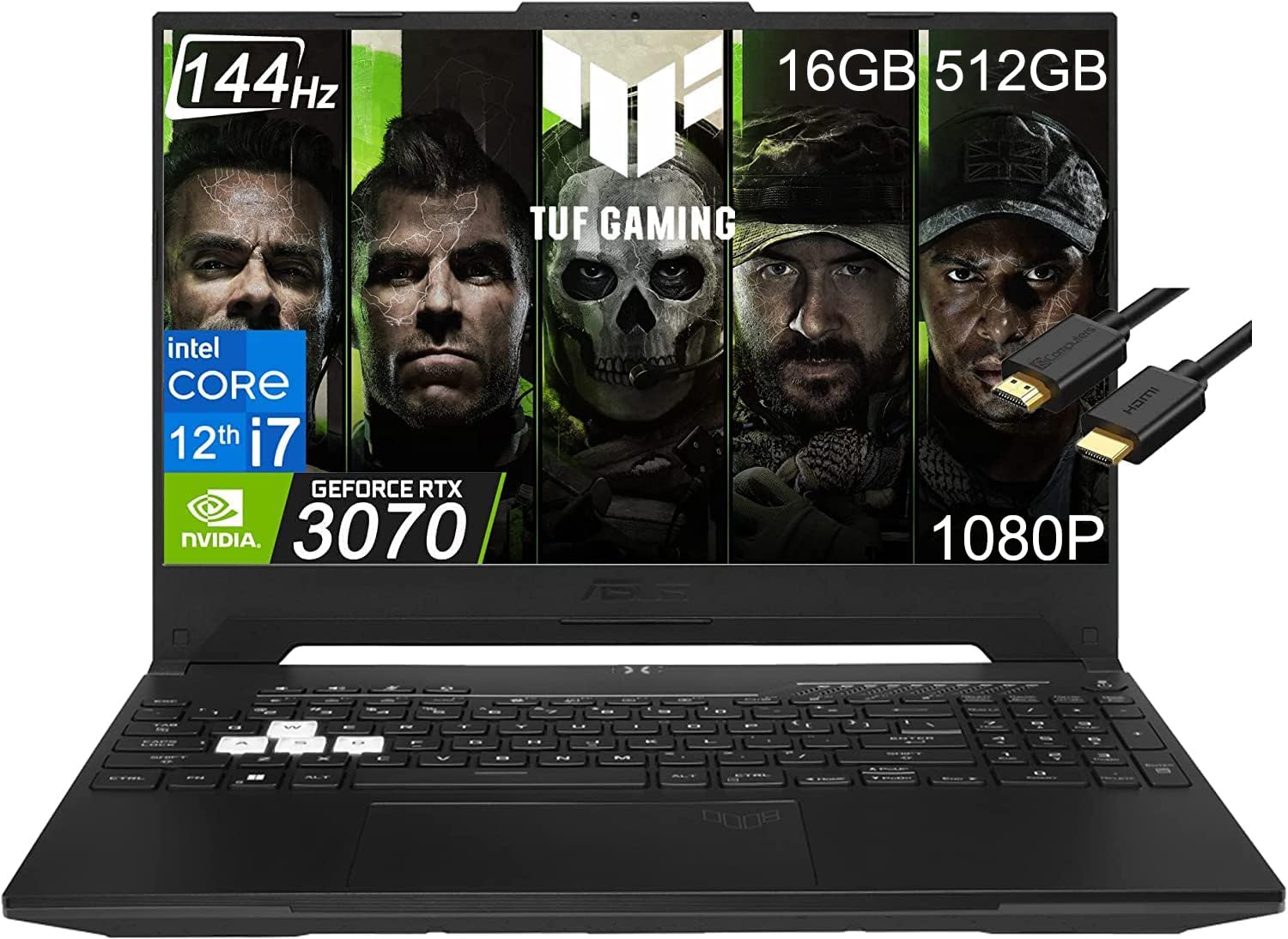
If you’re looking for a laptop that can handle retro gaming, the ASUS TUF Gaming Laptop F15 Dash 15.6″ 144Hz might be a good choice for you.
Pros
- The NVIDIA GeForce RTX 3070 graphics card offers powerful and efficient dedicated graphics for gameplay at max settings.
- The laptop has a modern design that is both sleek and portable, with a mecha-inspired aluminum top cover and super-narrow bezels.
- The self-cleaning Arc Flow fans with anti-dust technology and noise-canceling setting make for a quieter and cleaner gaming experience.
Cons
- The laptop is on the heavier side, weighing in at 4.41 pounds.
- The keyboard may not be comfortable for everyone, as it is a chiclet keyboard.
- The laptop does not have an optical drive.
We recently got our hands on the ASUS TUF Gaming Laptop F15 Dash 15.6″ 144Hz and were impressed with its performance. The dedicated graphics card, NVIDIA GeForce RTX 3070, offers powerful and efficient graphics for gameplay at max settings. The laptop also has a modern design that is both sleek and portable, with a mecha-inspired aluminum top cover and super-narrow bezels.
One of the standout features of the laptop is the self-cleaning Arc Flow fans with anti-dust technology and noise-canceling setting. This makes for a quieter and cleaner gaming experience, which is always a plus.
However, the laptop is on the heavier side, weighing in at 4.41 pounds. Additionally, the keyboard may not be comfortable for everyone, as it is a chiclet keyboard. Finally, the laptop does not have an optical drive, which may be a dealbreaker for some.
Overall, if you’re looking for a laptop that can handle retro gaming, the ASUS TUF Gaming Laptop F15 Dash 15.6″ 144Hz is definitely worth considering. With its powerful graphics card and modern design, it’s a solid choice for any gaming enthusiast.
Dell G15 15.6‘’ FHD 120Hz Gaming Laptop
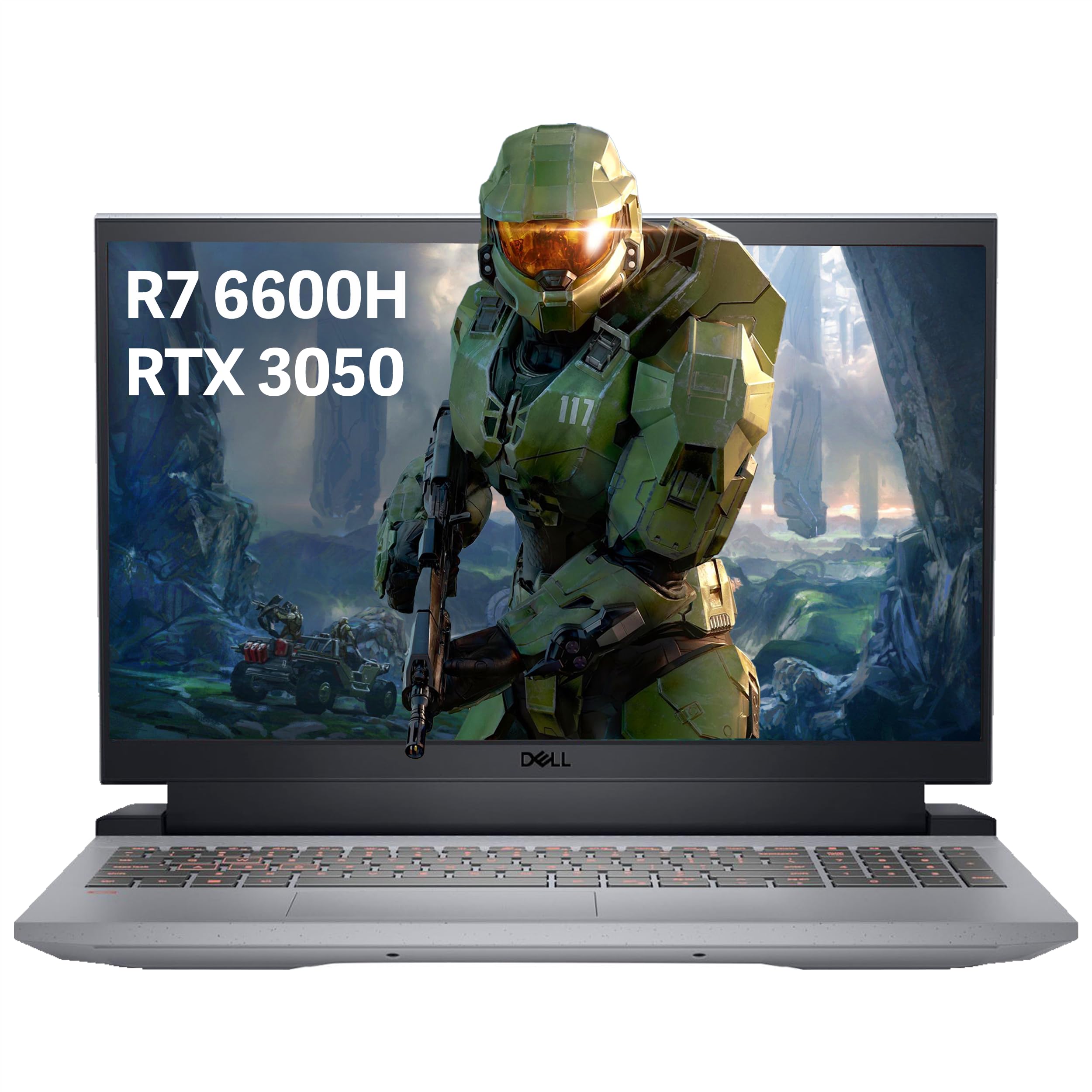
If you’re looking for a laptop that can handle retro gaming, the Dell G15 15.6‘’ FHD 120Hz Gaming Laptop is a great option.
Pros
- The 15.6″ FHD Anti-Glare Display is perfect for gaming with its 1920 x 1080 resolution and 120Hz refresh rate.
- The AMD Ryzen 5 6600H Mobile Processor provides ultimate performance with its 8 cores and 16 threads.
- The 16GB DDR5 RAM and 512GB PCIe SSD allow for fast and efficient processing.
Cons
- The laptop is a bit on the heavier side, weighing in at 5.55 pounds.
- The backlit keyboard can be a bit loud and distracting.
- The laptop’s battery life isn’t the best, so you may need to keep it plugged in while gaming.
We’ve been using the Dell G15 for a few weeks now and we’re impressed with its performance. The 15.6″ FHD Anti-Glare Display is perfect for gaming, providing clear and vibrant visuals. The AMD Ryzen 5 6600H Mobile Processor is powerful, allowing for smooth and seamless gameplay. The 16GB DDR5 RAM and 512GB PCIe SSD are also great features, providing fast and efficient processing.
However, the laptop is a bit on the heavier side, weighing in at 5.55 pounds. The backlit keyboard can also be a bit loud and distracting, which may not be ideal for some users. Additionally, the laptop’s battery life isn’t the best, so you may need to keep it plugged in while gaming.
Overall, if you’re looking for a laptop that can handle retro gaming, the Dell G15 15.6‘’ FHD 120Hz Gaming Laptop is a solid choice. Its powerful processor, efficient processing, and high-quality display make it a great option for gamers.
ASUS TUF Gaming A15
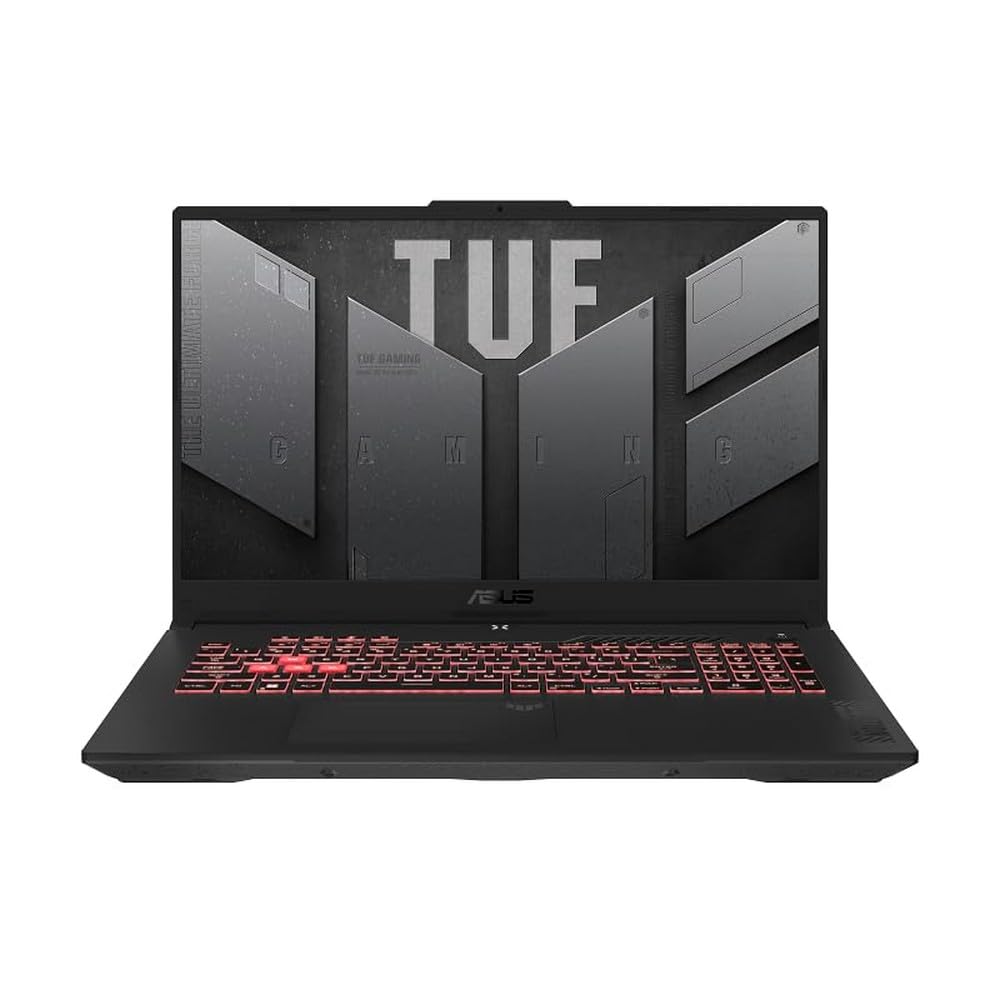
If you’re looking for a laptop that can handle retro gaming, the ASUS TUF Gaming A15 is a solid choice.
Pros
- The TUF Gaming A15 has a powerful AMD Ryzen 7 7735HS CPU and NVIDIA GeForce RTX 4050 Laptop GPU at 140W Max TGP, making it ready for anything.
- With 16GB of DDR5-4800MHz memory and 1TB of PCIe 4×4 storage, multitasking and loading times are fast.
- The FHD 144Hz display with 100% sRGB color and adaptive sync tech reduces lag, minimizes stuttering, and eliminates visual tearing for ultra-smooth and lifelike gameplay.
Cons
- The battery life is not the best, especially with the screen brightness at max.
- The laptop is a bit heavy at 8.75 pounds, making it less portable.
- The TUF Gaming A15 can be a bit noisy due to the pair of 84-blade Arc Flow Fans.
We’ve used the TUF Gaming A15 for a while now, and it’s a great laptop for retro gaming. The MUX Switch with Advanced Optimus increases laptop gaming performance by 5-10% by routing frames directly from the dGPU to the display bypassing the iGPU. The military-grade toughness ensures reliability, and the Xbox Game Pass Ultimate is a nice bonus.
The TUF Gaming A15 is not perfect, though. The battery life is a bit disappointing, and the laptop is a bit heavy. The fans can also be a bit noisy, but they do a great job of improving cooling performance.
Overall, if you’re looking for a laptop that can handle retro gaming and more, the ASUS TUF Gaming A15 is a great choice.
Conclusion
Retro gaming on emulators allows you to revisit the classic titles that defined the early days of the industry, bringing back fond memories and letting you experience historic games with modern conveniences. And thanks to the versatility of laptops, you can now take your favorite retro games anywhere while getting smooth performance, crisp graphics, and authentic controls.
As we’ve covered,emulator capabilities can vary widely based on the laptop’s specs like CPU speed, GPU power, display response time, audio support, and input methods. Carefully evaluating these factors and choosing a laptop well-suited for your preferred retro systems can make all the difference in achieving satisfying emulation experiences versus struggling with lag, visual issues, and input lag.
Midrange and high-end gaming laptops certainly provide excellent retro emulation capabilities. But even budget laptops can deliver playable retro experiences depending on the emulator and game, sometimes even matching original console graphics and performance. Desktop PCs give you ultimate flexibility for a customized emulation station. However, gaming laptops strike an ideal balance of performance, display fidelity, sound, and controls in a portable form factor.
At the end of the day, smooth emulation comes down to picking laptops with better processing specs aligned with your target systems. Integrated graphics are sufficient for simpler 2D consoles but dedicated GPUs allow stepping up to demanding 3D systems. Faster CPUs with stronger single core speed handle intensive per-frame emulation overhead. And fast displays and inputs provide responsive controls critical for precise retro gameplay.
Beyond sheer performance, don’t underestimate the importance of recapturing the intangible nostalgic feel of retro experiences on new devices. This means getting the input feedback, visual effects, and sounds right while revisiting the games you enjoyed years ago. When shopping for a retro emulation laptop, keep the big picture in mind to get a well-rounded system.
While individual games and systems have varying emulator needs, choosing laptops tailored for retro gaming has never been more accessible for reliving the past. Whether you grew up with a Game Boy, Genesis, Nintendo 64 or PlayStation, you can now enjoy a vast library of classics on capable laptops that deliver the performance and fidelity you expect. So dig out those classic cartridges or CDs and start exploring your emulator options. A whole new generation of retro gaming fun awaits!
FAQ
What is the best laptop CPU for emulation?
For the fastest emulation speeds, an Intel Core i5 or i7 CPU or an AMD Ryzen 5 or 7 CPU with high per core performance is recommended. Aim for at least 4 physical cores and base clocks around 2.5Ghz or higher.
Do you need a good GPU for emulation?
A dedicated NVIDIA or AMD GPU is ideal for enhancing graphics in emulators and enabling higher resolutions and enhancements. However, modern integrated graphics can often run simpler emulators adequately depending on the game.
What display resolution should I look for?
1080p or 1440p displays provide enough resolution to properly integer scale lower retro resolutions while maintaining sharp pixel graphics. Avoid 720p screens.
Is a gaming laptop overkill for emulation?
Not necessarily. Many gaming laptop specs like fast CPUs/GPUs, high refresh rate displays and quality speakers are very beneficial for emulation even if full power is not required. The most demanding emulators can utilize the added horsepower.
Which retro systems are easiest to emulate?
Older home consoles like NES, SNES, Genesis, PS1, N64 and handhelds like Game Boy and Game Boy Advance can be emulated smoothly even on very basic integrated laptop hardware in most cases.
What accessories are recommended for retro gaming laptops?
A quality controller like the Xbox controller provides a great d-pad and button layout for retro console games. And a laptop cooling pad helps ensure your system doesn’t throttle speeds during extended gaming sessions.

